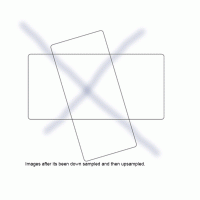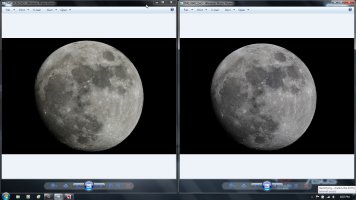jrista said:
............
I've long held the opinion that crop sensor cameras, like the 7D, do have value in certain circumstances. The most significant use case where a camera like the 7D really shows it's edge over full frame cameras is in reach-limited situations.
............
I'd like to prove my case
................
Both images were initially scaled to approximately 1/4 their original size (770x770 pixels, to be exact).
The 5D III image was then layered onto the 7D image, and upsampled in Photoshop by a scale factor of exactly 161.32359522807342533660887502944%.
While I agree with you that a 7D (or any so called crop sensor) can have advantages over a so called full frame sensor. I think you need to review your work if your objective is to reach a valid conclusion.
1) you start off with a strong opinion. (its better to have an open mind)
2) Then you try to "prove my point". (it might be better to try to test your opinion)
3) Then you do something that is going to be very detrimental to one of the images.
You may claim that you would have to upsample the 5D3 image to get the same size as the 7D. But you have already down sampled it - so you have lost detail in the 5D3 file.
To demonstrate I made a simple file in Photoshop. 770 pixies ;D wide, copied it, scaled it to 481 wide, then upscaled it to 770 wide. Hardly by chance my file had two types of detail. A sharp line and a not so sharp line. The result can be seen below.
I think I have just proved that photoshop is better than photoshop.

Don't get me wrong I'm a fan of the 7D and think its a great camera. I also think there is a place for "crop sensors". I'm waiting for the 7D2, I don't think it will be for me, but I definitely see a crop sensor shaped hole in my kit.
and finally whats with 30 odd decimal places!
EDIT: Just in case anyone wonders ;D the down sampling and up sampling were done with default PS settings






